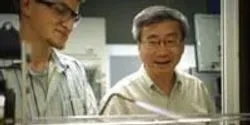News

One has experience working with robots in space. The other two have experience in areas associated with mining, including mineral processing and rock mechanics. Together, these three researchers from West Virginia University will work to create a system that will provide NASA data on asteroids.

A recently published study in the Journal of the American Medical Association Pediatrics, based in part on research from the Children’s Hospital of Michigan part of the Detroit Medical Center, shows that oral antibiotics are just as effective as those delivered intravenously to children struggling with osteomyelitis.

When it comes to the future of medicine, small is indeed beautiful. Working at the nanoscale, tens of thousands of researchers are in a race to develop tiny nanoparticles, nanodevices and nanopatterned surfaces for medical applications. Their goals are both comprehensive and ambitious. They are hoping to create drugs that stop disease processes at the molecular level where they start, engineer drug delivery systems that are small enough to reach deep within the body and build scaffolding and textured surfaces that the body can use to regenerate lost or damaged tissue.

The central regions of many glittering galaxies, our own Milky Way included, harbor cores of impenetrable darkness—black holes with masses equivalent to millions, or even billions, of suns. What is more, these supermassive black holes and their host galaxies appear to develop together, or "co-evolve." Theory predicts that as galaxies collide and merge, growing ever more massive, so too do their dark hearts.

Just as the Navy was deploying a laser weapon to the Persian Gulf, a Clemson University researcher already was thinking about how to make it more powerful.

A collaboration between Cornell University and the Kitchen Theatre Company (KTC) has found a new way to make physics irresistible, with “Physics Fair,” an original musical theater production.















